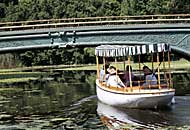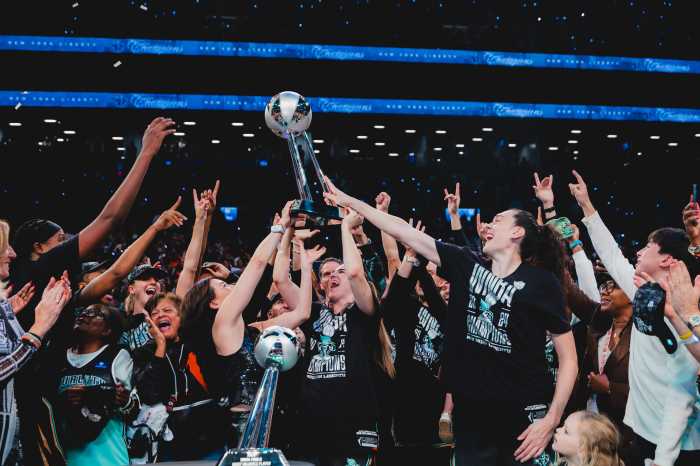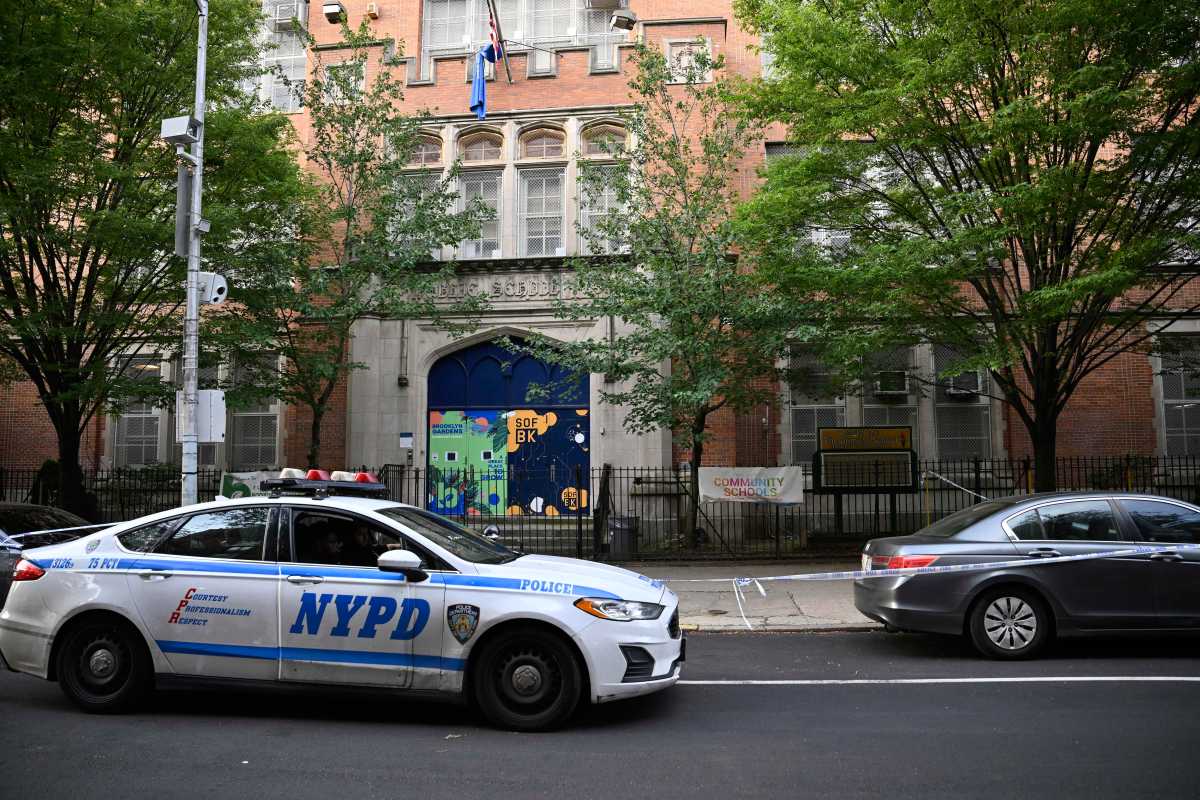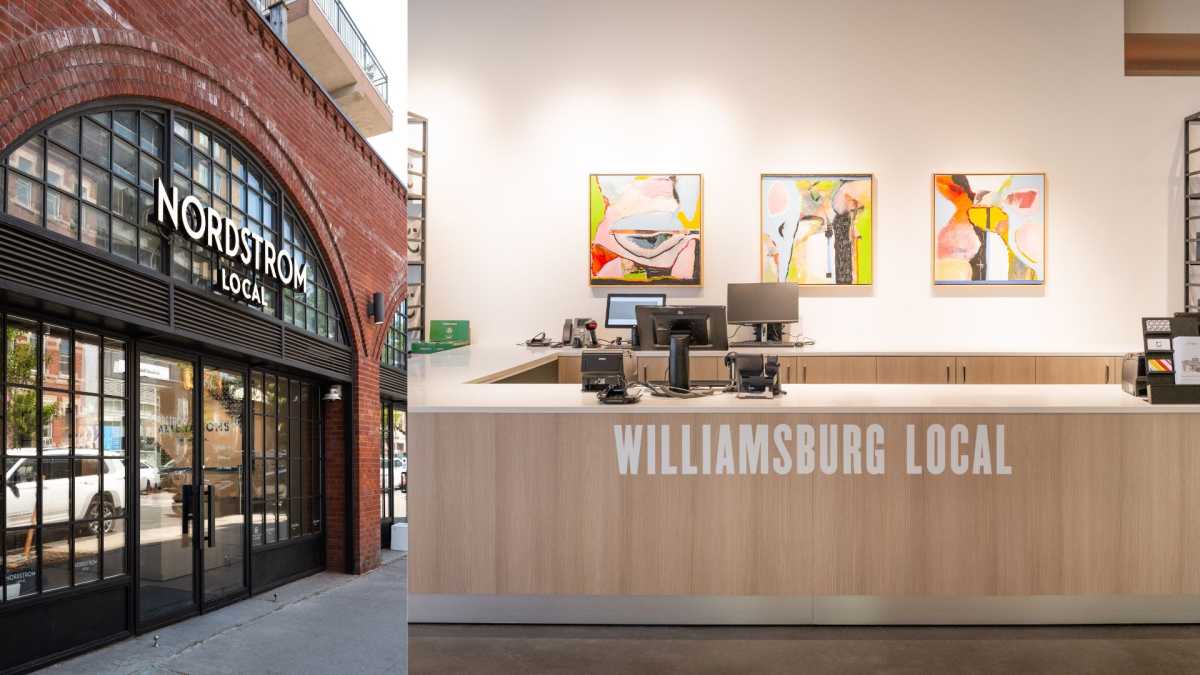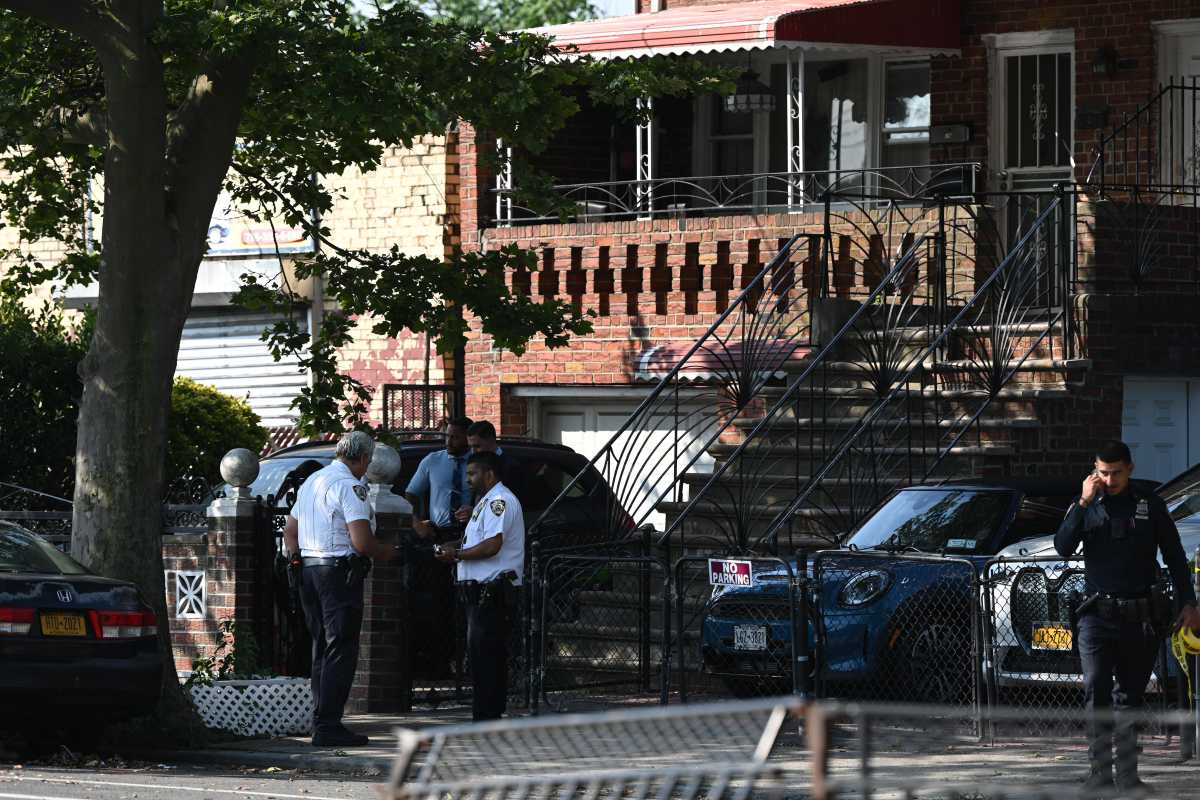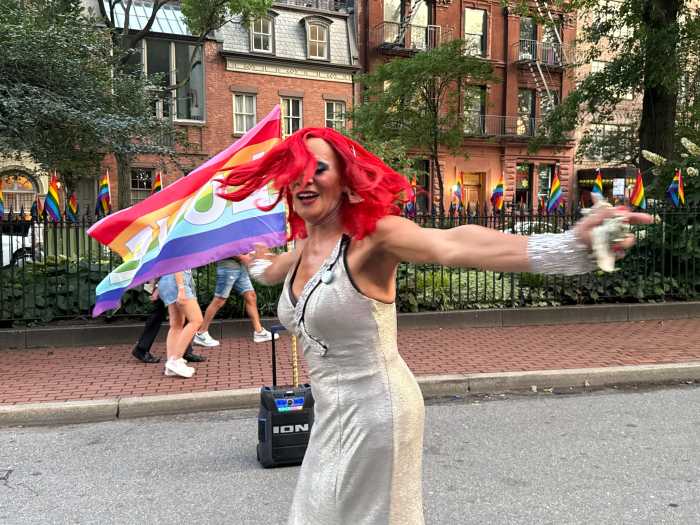Let this year be the one in which you truly
embrace and enjoy summer’s pleasures. Forsake that air-conditioned
cool to explore the natural beauty that Brooklyn – yes Brooklyn
– affords in unexpected places.
For instance, you may have already known that Prospect Park offers
an excellent slate of performances at the band shell, and there’s
no better place to go for a picnic, but did you know the park
is also an important habitat for animals and birds?
The new Audubon Center, which opened at the Prospect Park Boathouse
on April 26, is now offering electric boat tours, for just $3,
of the Lullwater and 60-acre Prospect Lake. With its phragmites
– tall grasses along the shores – providing prime real estate
for birds looking to nest, there’s a lot to spot on these birding
boat tours.
The center’s executive director, Cheryl Bartholow, explained
that the boathouse is "positioned on low water, which is
the best nesting area for birds" and the quiet, captained
electric boat doesn’t disturb the birds while it allows visitors
to get a closer peek at them.
On Friday, we boarded The Independence to see what birds the
lake was attracting. (The center’s director of education, Glenn
Phillips, said, "The earlier the better" to see the
greatest amount of bird activity, but the boat ride has charm
any time of day.)
We took our seats on The Independence’s mahogany bench, under
the green-and-white
striped canopy, and it was easy to feel like a tourist in a dreamy,
quieter version of Venice as the boat smoothly glided away from
the dock, leaving behind its stately patio and cafe.
Captain Pierre Vautravers helmed the 30-foot fantail craft for
the half-hour tour.
As we pulled away from the dock, we saw a black crown heron rooting
around for snails by the boathouse.
"It’s hard to believe you’re in Brooklyn on some parts of
the ride," said Bartholow.
As The Independence glided under the Lullwater Bridge we were
instructed to look up to see that the bridge’s cast-iron underside
was decorated for the pleasure of boaters.
New to the park is the rustic arbor with bench seating and a
"beach" that is visible from the boat. (You won’t find
sand on this "beach"; the term is park lingo for a
cement slope going down to the water.)
On the surface of the water, we passed a seasonal crop of duckweed,
flowering primrose and water shield with yellow blossoms. There
are also small areas of the lake fenced in with chicken wire
to keep in barley straw, a natural way to minimize algae in the
water, explained Phillips.
"It releases hydrogen peroxide, which reduces algae and
it’s even better for fish," he said. (The water of manmade
Prospect Lake is "New York City tap water," explained
Bartholow.)
The hotter it gets, she said, the more visible the turtles are
as they surface to sun themselves on logs.
Phillips pointed out a lone red-eared pond turtle, an offspring
of a presumably abandoned pet.
"[Turtles] live as long as people," said Phillips.
"These have chased away the native painted turtle. People
shouldn’t have turtles as pets. They don’t stay little enough
to be kept in kitchens."
A white mute swan glided by, and then, around a bend, we saw
a mother duck and her ducklings scooting along the shore. Phillips
guessed that those ducklings must be less than a week old.
"Ducklings are precocious; they can swim from the moment
they’re born," he said.
Phillips explained that birds are shy in the summer because they’re
nesting. "Mallards, wood duck and Canadian geese breed here,"
he said.
Orioles, noticeable for their black heads and orange bodies,
are some of the most special birds that breed in the park, Phillips
noted.
"They nest in the tops of trees near water. We saw a pair
nesting in the Lullwater," he said. Visitors to the center
can see an enormous replica of an oriole’s nest inside the center,
and climb inside to sit on the eggs.
The Audubon Center is planning to put cameras on various birds’
nests so visitors can watch their activity on monitors, said
Phillips.
From the boat, one of the most spectacular birds we caught sight
of was the tall, white egret, posing beneath a low-hanging branch.
"The egret is the symbol of the Audubon Society," said
Phillips. "They were almost hunted to extinction because
women used to put their feathers in their hats."
The elegant bird seemed unfazed by our excitement and the quiet
boat. "It’s a frequent visitor here," he said. "We
provide lots of food by keeping the lake clean for fish and frogs."
Then we saw a double-breasted cormorant – which eluded our cameras
by diving beneath the lake’s surface over and over again, resurfacing
briefly with her dark feathers glistening in the sun. This shy
bird also kept her distance from the boat, and binoculars would
have come in handy.
On our way back to the boathouse we were able to get much closer
to a rare sight – a green heron. Puzzled by the name, we looked
at Captain Pierre who acknowledged it’s misleading.
"Only in a certain light does it really look green – a dusty
green," he said.
The park’s varied habitat makes it an important stopover point
for migratory birds, and as a result, it has been designated
an "important bird area" by Audubon New York, according
to Chuck Remington, director of education for the organization.
More than 200 species of birds were spotted in Prospect Park
last year, including 61 rare migratory birds and resident species.
Upon disembarking the boat, with a hand from Captain Pierre,
we noticed the queue was already full with the next 14 passengers
ready to hop on.
Because the tours sell out quickly – especially on weekends –
tickets to a boat tour should be purchased as soon as you get
to the boathouse. We were advised to while away the time until
the next tour began inside the center, which offers an array
of displays and interactive exhibits to help visitors refine
their bird-spotting skills and attune their senses. (Even the
center’s French doors have bird songs that are triggered by motion
detectors when you open them.)
After a tour, visitors can use the center’s identification software
on the six new computers, or reference the field guides, to learn
more about the birds they’ve spotted.
There are so many birds to discover in Prospect Park, one boat
tour this summer won’t be enough. But the next time you visit
the park, you’ll be able to appreciate – and possibly identify
– a few more of its feathered inhabitants.
Boat tours leave the Audubon Center
at the Prospect Park Boathouse Wednesday-Thursday, from 1 pm
to 5 pm, and Friday-Sunday, from 10 am to 5 pm. Tickets are $3.
Binoculars are suggested. The boathouse is near the entrance
at Lincoln Road and Ocean Avenue. For information about hours
and programs, visit www.prospectparkaudubon.org
or call (718) 287-3400.
Pedal boats, which seat four, can be rented from Kate’s Corner,
near the Wollman Rink. An adult must accompany children under
16 years. Rides are $10 an hour with a $10 deposit, weekends
and holidays, from noon to 5 pm, Thursday-Friday, from 11 am
to 4 pm. For further information, call (718) 282-7789.
The Brooklyn Bird Club hosts its "Introduction to Bird Watching"
walking tours every Saturday and Sunday, from 10 am to 11:30
am, led by volunteers.


